A 529 Plan is a Powerful Tool to Save for College
Insights from experienced financial professionals.
For many families, there’s a sense of excitement and anticipation that fills the air as high school seniors prepare to embark on their next journey: college. Graduation holds significant importance for students and their families, as it marks a critical juncture in the college planning process.
It also serves as a reminder of the paramount importance of saving for college, a task that should be taken seriously and initiated well in advance. The rising costs of higher education necessitate careful financial planning, and an upcoming graduation serves as a timely reminder to assess one's savings strategy, explore available resources, and prioritize building a solid financial foundation for the future.
Saving for College
Saving for college is a vital financial goal for many families, considering the rising costs of higher education. It is never too early to start planning and setting aside funds so that your child may have access to quality education without burdening them with excessive student loans or compromising your own financial stability. One effective tool that may greatly assist in this endeavor is a 529 plan.
A 529 plan, named after Section 529 of the Internal Revenue Code in the United States, is a tax-advantaged savings plan designed specifically for educational expenses. It offers several benefits that make it an attractive option for parents and guardians seeking to save for their children's college education.
Tax Advantages
First and foremost, a 529 plan provides tax advantages. While contributions to the plan are not deductible on your federal income tax return, the earnings within the plan grow tax-free. When you withdraw the funds for qualified educational expenses, such as tuition, fees, books, supplies, and even room and board, the earnings are not subject to federal income tax. This tax-free growth can significantly enhance your savings over time and provide you with more resources to cover college expenses.
Furthermore, many states offer additional tax benefits for residents who contribute to their state's 529 plan. These benefits can include deductions or credits on state income taxes, potentially reducing your overall tax liability. It's crucial to review the specific rules and regulations of your state's plan to take full advantage of these potential tax benefits.
Flexibility
Another advantage of a 529 plan is the flexibility it provides. You can typically open an account with a relatively small initial contribution and make regular contributions over time. Some plans even offer payroll deduction or automatic investment options, making it convenient to save consistently. Additionally, you have control over the investment options within the plan, allowing you to choose the level of risk and potential growth that aligns with your financial goals.
529 plans are also flexible in terms of the beneficiary. If the intended beneficiary decides not to pursue higher education or receives a scholarship, you can change the beneficiary to another qualifying family member without incurring penalties. This flexibility can help establish that your savings can still be utilized for educational purposes within your family.
One notable aspect of 529 plans is that they can be used for qualified expenses at eligible colleges, universities, and vocational schools nationwide, as well as some institutions abroad. This flexibility allows your child to pursue their educational goals wherever they choose, without being restricted to specific institutions or locations.
Your Financial Professional Can Help
Overall, a 529 plan provides a powerful means of saving for college and can alleviate the financial strain associated with higher education. By taking advantage of the tax benefits, flexible contribution options, and potential investment growth, you work toward building a substantial nest egg to support your child's educational aspirations. However, it is essential to carefully research and compare different plans, considering factors such as fees, investment options, and state-specific benefits, to select the plan that suits your needs and financial situation.
Remember, the earlier you start saving, the more time your investments have to grow, compounding their potential value. So, don't delay.
Begin exploring your options and take the necessary steps to secure your child's educational future through a 529 plan.
Important Disclosures
The opinions voiced in this material are for general information only and are not intended to provide specific advice or recommendations for any individual. To determine which investment(s) may be appropriate for you, consult your financial professional prior to investing.
Prior to investing in a 529 Plan investors should consider whether the investor's or designated beneficiary's home state offers any state tax or other state benefits such as financial aid, scholarship funds, and protection from creditors that are only available for investments in such state's qualified tuition program. Withdrawals used for qualified expenses are federally tax free. Tax treatment at the state level may vary. Please consult with your tax advisor before investing. Non-qualified withdrawals may result in federal income tax and a 10% federal tax penalty on earnings.
This information is not intended to be a substitute for specific individualized tax advice. We suggest that you discuss your specific tax issues with a qualified tax advisor.
This article was prepared by FMeX.
LPL Tracking #1-05372589


